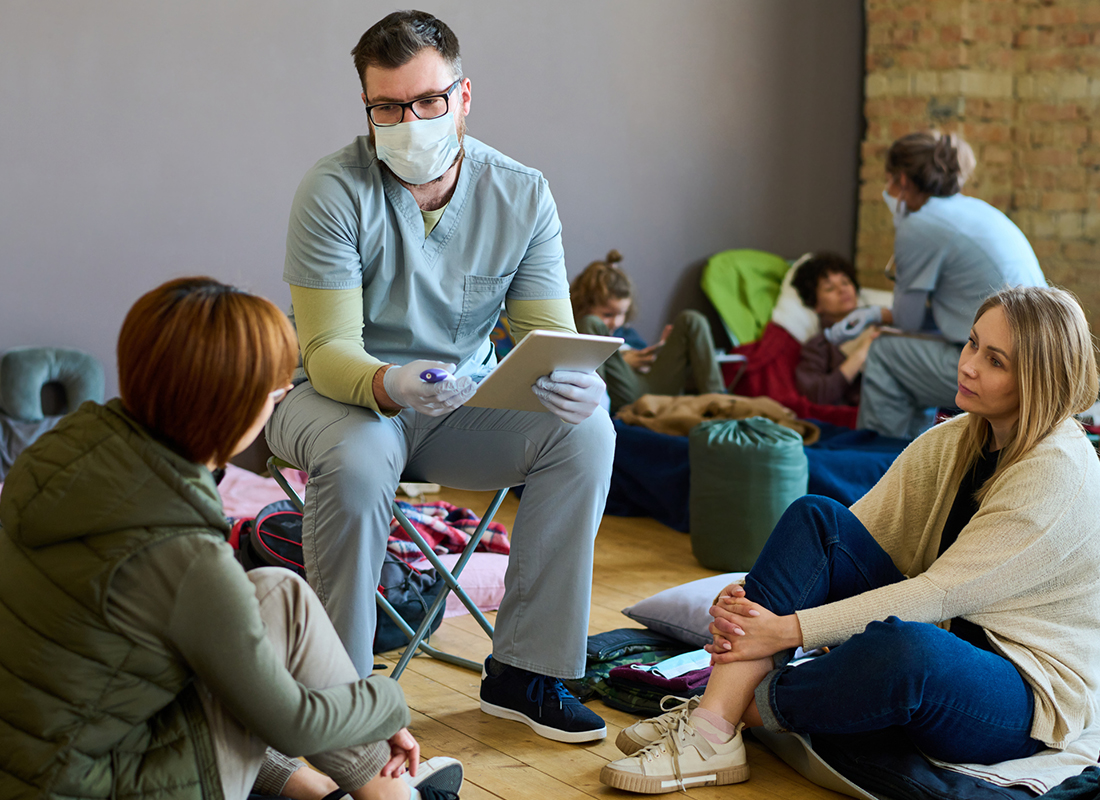Bringing the Lab to the Patients
Actions clinical laboratories can take to better reach underserved communities, raise the lab’s profile, and increase health equity for all

Most people will need the services of the clinical lab at some point in their lives—but many never access its services. For patients who are unhoused or housing-insecure, the journey to the lab involves a range of hurdles, from accessing providers without a fixed address to receiving results needed for follow-up care. These gaps are emblematic of a systemic problem with no easy solution—but even so, there are opportunities for clinical laboratory professionals to help address some of the issues these underserved patients face.
Producing readable reports
“Pathology has its own secret language and terminology,” says Richard M. Levenson, professor and vice chair for strategic technologies in the University of California, Davis Department of Pathology and Laboratory Medicine. “A standard diagnostic report is illegible to anybody except other pathologists—a patient reading it might understand individual words, but not the full meaning.” For people with low health literacy or inconsistent access to a primary care provider, a confusing report can mean the difference between seeking additional care or giving up. To solve that problem, Levenson is experimenting with artificial intelligence tools to summarize reports in plain language. “It may not be perfect, but this is something that is trivially easy on a technical level that we can do—simply take our written reports and make them legible to patients.”
He also cautions lab professionals to think of patient education as an ongoing process. “It’s important not to see it as ‘one and done.’ When you receive a complicated or life-changing diagnosis, even if it’s perfectly explained, it may take days to sink in. Then you have more questions and you’ll want to come back and pursue them—so that should be part of the model.”
Increasing (digital) access
Keisuke Nakagawa, director of innovation at the UC Davis Health Digital CoLab, says, “Medical care is becoming much more digitally centered. One of the biggest barriers as we move toward ‘convenient’ digitally enabled services is ensuring that everyone can actually access them.” Patients who don’t own phones or laptops may struggle to book appointments, review results, or contact doctors they’ve seen in the past. That’s why Nakagawa’s Digital Health Innovation Group is distributing free cell phones to vulnerable patients—but digital access doesn’t end there. “I think we’re still only halfway to where we can go. Right now, the onus is still on the patient to know what kinds of services they need and seek them out. There are opportunities for us to be more proactive. I think we’re still just at the start of our journey toward making health care more human-centered.”
An example is Nakagawa’s enthusiasm for expanding the information patients receive and the way it’s delivered. “Many people are visual learners who really appreciate images, but they don’t really get to see their slides or scans because we assume they just want to hear the punchline,” says Nakagawa. “I would argue that walking people through those kinds of images and showing them what’s actually going on in their cells is more engaging and improves health literacy.”
Meet patients where they are
“I think pathologists and laboratory medicine professionals have a lot of opportunity to be the explainers for medicine,” says Nakagawa. Often, patients aren’t aware of the role laboratorians play in their care, but helping patients understand where their disease originated or why doctors recommend a specific treatment could raise the lab’s public profile.
Levenson agrees. His advice to labs? “Take control of the communication. Instead of relying on complicated reports to clinicians who then have to translate them for patients, generate patient-ready information right off the bat. Provide pictures—or video if the report is digital. Include your telephone number. Be proactive about patient outreach.”
For both, the take-home message is the same: to help underserved populations, bring the lab to them. By making the information they receive as accessible as possible and creating opportunities to have their questions answered and their voices heard, labs can help patients navigate the healthcare system and make strides toward greater health equity.
Subscribe to Clinical Diagnostics Insider to view
Start a Free Trial for immediate access to this article